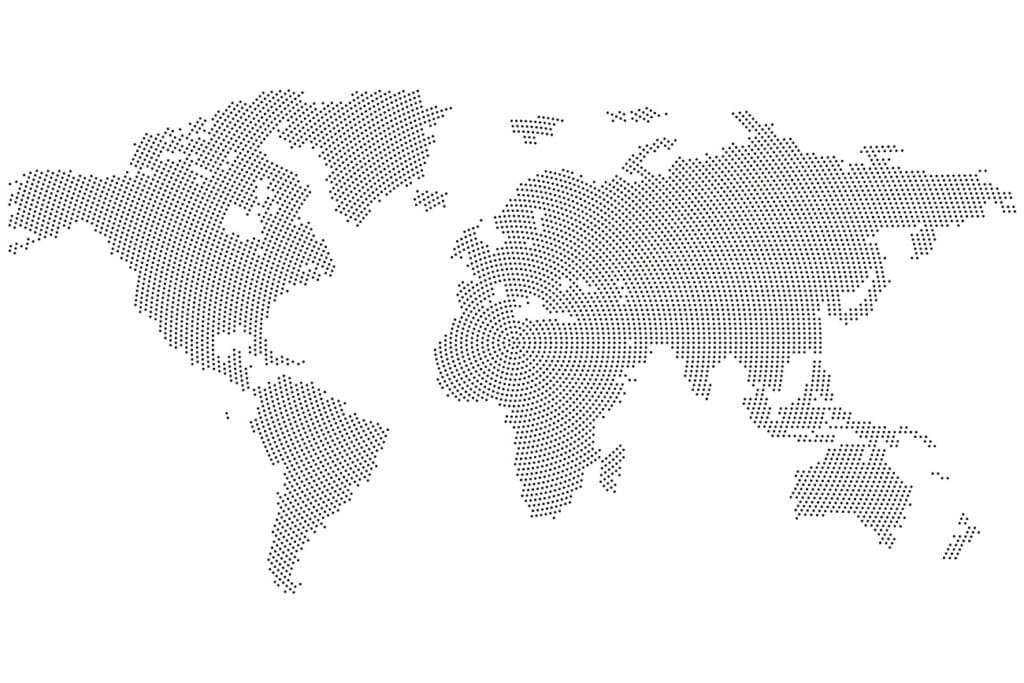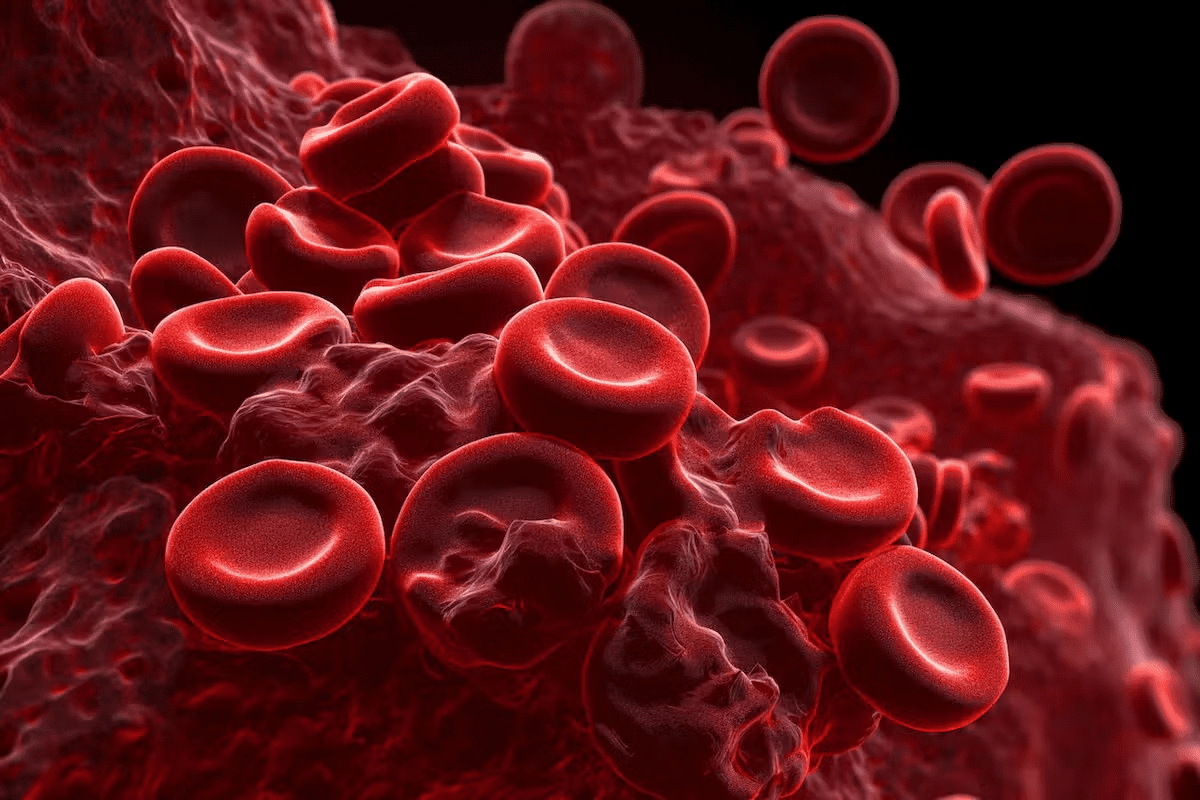Last Updated on November 27, 2025 by Bilal Hasdemir

We are seeing a worrying trend in global health. Cancer incidence rates vary significantly across different nations. Looking at the data for 2025, it’s clear that some countries are disproportionately affected by this disease.
Australia has the highest age-standardized rate, with over 460 new cases per 100,000 people. It is the country with the highest cancer rate. This alarming statistic shows the need to understand the global cancer landscape and identify the nations with the highest incidence rates.
At Liv Hospital, we are committed to providing world-class healthcare and support to international patients. In this article, we will explore the top 10 countries with the highest cancer rates in 2025. We aim to shed light on the global cancer statistics and guide lifesaving choices.
Key Takeaways
- Global cancer incidence rates vary significantly across different countries.
- Australia has the highest age-standardized cancer rate in 2025.
- Certain nations are disproportionately affected by cancer.
- Understanding cancer statistics can guide lifesaving choices.
- Liv Hospital provides advanced and patient-centered care for international patients.
The Global Cancer Landscape in 2025
In 2025, the world will face new challenges and chances to improve cancer care. Looking at today’s cancer rates, it’s clear we must understand the global cancer scene. This is key to tackling this disease.
Current Worldwide Cancer Burden
The global cancer burden is huge, with different rates in various places. Cancer is a top cause of death, with nearly 10 million deaths in 2020. Cancer affects everyone, no matter their wealth or where they live.
Some cancers are more common in certain areas. This is because of lifestyle, genetics, and the environment. For example, lung cancer is higher where people smoke a lot. Liver cancer is more common in places with a lot of hepatitis B and C.
Projected Changes and Emerging Patterns
Looking ahead to 2025, we see trends changing the cancer scene. Population growth and aging will lead to more cancer cases, even if rates don’t rise.
There’s a shift towards more targeted cancer treatments. This is thanks to genetic research and immunotherapy.
“The future of cancer treatment lies in our ability to tailor therapies to individual patients based on their unique genetic profiles and tumor characteristics.”
Understanding Cancer Statistics by Country
To get a clear picture of cancer worldwide, we need to know how statistics are gathered and read in each country. These numbers are key for those making policies, working in healthcare, and doing research. They help figure out how much cancer affects people, where to put resources, and how to fight it better.
Age-Standardized Rates vs. Absolute Case Numbers
When looking at cancer statistics by country, it’s important to know the difference between age-standardized rates and absolute case numbers. Age-standardized rates help us compare countries fairly by adjusting for age differences. This makes the data more reliable for comparing different populations.
Absolute case numbers show the real number of cancer cases in a country. This number considers the country’s size and age of its people. For example, a country with many older people might have more cancer cases, even if the age-standardized rate is not high.
Data Collection Methods and Limitations
The quality of cancer statistics depends a lot on how the data is collected. Sources include:
- Cancer registries, which collect data on cancer cases in a specific area.
- Hospital records and healthcare databases.
- National health surveys and death statistics.
But, there are challenges with these methods. For instance, some countries might not have complete data because of lack of resources. Also, how cancer is diagnosed and reported can vary, making it hard to compare data.
It’s essential to understand these details to read cancer statistics by country correctly. By looking at both age-standardized rates and absolute numbers, and knowing the strengths and weaknesses of data collection, we can better understand cancer worldwide.
Australia: Leading the World in Cancer Incidence
Australia has the highest rate of new cancer cases, with 460 cases per 100,000 people. This is a major worry for health experts and researchers. It’s important to know why this is happening to find ways to lower cancer rates in Australia.
Current Rate of 460 Cases per 100,000
Australia’s cancer rate is 460 cases per 100,000 people, the highest in the world. This rate is age-standardized, making it easier to compare with other countries. The reasons for this high rate include an aging population and lifestyle choices.
Factors Behind Australia’s High Cancer Prevalence
Several factors lead to Australia’s high cancer rates. These include:
- Lifestyle choices like smoking and drinking too much alcohol
- Exposure to UV radiation from the sun
- Genetic risks in some groups
Knowing these factors helps in creating plans to fight cancer in Australia.
Denmark: Second Highest Cancer Rate Globally
Denmark has one of the highest cancer rates, second only to Australia. We need to look closely at its cancer profile and prevention efforts. We’ll dive into Denmark’s cancer statistics, focusing on the most common types and future trends.
Cancer Profile and 2025 Projections
Denmark sees high rates of certain cancers. Breast cancer, lung cancer, and colorectal cancer are the most common. We’ll explore these trends and what’s behind Denmark’s high cancer rate.
Looking ahead to 2025, Denmark’s cancer cases are expected to rise. Early detection and screening programs will be key in managing this increase. Denmark’s healthcare system is ready to implement these programs.
| Cancer Type | 2020 Incidence | 2025 Projection |
|---|---|---|
| Breast Cancer | 4,500 cases | 4,800 cases |
| Lung Cancer | 3,800 cases | 4,000 cases |
| Colorectal Cancer | 3,200 cases | 3,500 cases |
Danish Cancer Prevention and Treatment Approaches
Denmark tackles cancer prevention and treatment in many ways. It has comprehensive screening programs for different cancers. This has led to early detection and better survival rates. We’ll look into these efforts and their impact on Denmark’s cancer stats.
“Effective cancer prevention requires a multi-faceted approach, including public health initiatives, lifestyle modifications, and targeted interventions.”
Some key prevention strategies in Denmark include:
- Public awareness campaigns on the risks of smoking and the importance of a healthy diet
- Screening programs for breast, cervical, and colorectal cancer
- HPV vaccination programs to prevent cervical cancer
These strategies show Denmark’s dedication to fighting cancer. By learning from Denmark, other countries can also tackle cancer more effectively.
Norway: Third Among Countries with Higher Cancer Rates
Norway is known globally for its high cancer rates, ranking third in the world. We will look at Norway’s cancer statistics and trends. We will also explore the Nordic cancer patterns to understand why this is happening.
Cancer Statistics and Trends in Norway
Norway’s cancer statistics show a complex situation. The country sees a lot of prostate, breast, and colorectal cancer. Norway’s cancer rate is among the highest globally. Cancer diagnosis is becoming more common, mainly among older people.
The Norwegian healthcare system is key in early cancer detection and treatment. Advanced diagnostic tools and treatment protocols have helped improve survival rates. Yet, the rising cancer cases are a big challenge that needs more research and focus.
Nordic Cancer Patterns and Contributing Factors
The Nordic region, including Norway, Sweden, Denmark, Finland, and Iceland, has similar cancer patterns. Genetic predispositions, lifestyle factors, and environmental influences shape the region’s cancer profile. For example, skin cancer in the Nordics is linked to sun exposure and genetics.
- Lifestyle factors such as diet and smoking habits
- Genetic predispositions among Nordic populations
- Environmental factors, including UV radiation exposure
Understanding these factors is key to fighting cancer in Norway and the Nordic region. By studying trends and patterns, we can tackle the cancer challenges in this area.
Hungary: Eastern Europe’s Cancer Challenge
Hungary faces a big challenge with cancer, due to lifestyle and economic factors. We look at the current cancer situation in Hungary. We focus on the most common cancers and what causes them.
Hungary’s Current Cancer Burden
In Hungary, some cancers are more common than others. Lung, breast, and colorectal cancer are the top ones. These cancers are linked to genetics, environment, and lifestyle. Hungary has one of the highest cancer rates in Eastern Europe.
The cancer problem in Hungary varies by region and population. Some areas and groups face more cancer issues. This shows the need for specific help.
Socioeconomic and Lifestyle Influences
Economic status greatly affects Hungary’s cancer rates. People with lower incomes often face higher cancer rates. This is because they might have less access to healthcare and face different health risks.
Smoking, diet, and exercise also play big roles in Hungary’s cancer rates. Smoking is a big risk for lung cancer. Bad diet and not enough exercise can lead to more colorectal cancer.
It’s key to understand these factors to fight cancer in Hungary. By tackling these issues, we can lower cancer rates and improve health for everyone.
Ireland: Fifth in Global Cancer Incidence
Ireland has one of the highest cancer rates in the world, ranking fifth globally. This ranking is based on the age-standardized rate of cancer cases. This method helps compare cancer rates fairly across different countries.
Cancer Statistics and Healthcare Response
In Ireland, many types of cancer are common, including breast, prostate, lung, and colorectal cancers. The Irish healthcare system has launched several cancer control programs to tackle this issue.
The National Cancer Control Programme (NCCP) is a major effort to fight cancer. It aims to prevent, detect, and treat cancer early. The NCCP works with healthcare professionals, researchers, and patient groups to better cancer care.
Risk Factors Specific to Ireland
Several factors contribute to Ireland’s high cancer rate. Lifestyle factors like smoking, drinking alcohol, and diet are key. Obesity and less physical activity are also linked to cancer risk.
Environmental and genetic factors also play a part. Exposure to harmful substances and a family history of cancer can raise risk. Knowing these factors helps in creating effective prevention plans.
By tackling these risk factors and improving healthcare, Ireland hopes to lower its cancer rate. This will help improve outcomes for those with cancer.
New Zealand: Sixth in Worldwide Cancer Rates
New Zealand has a high cancer rate, ranking sixth globally. We look into why this is and how it affects the population, mainly the Māori.
Cancer Profile and Indigenous Population Impact
The cancer rate in New Zealand is alarming, with some groups hit harder. The Māori population faces a higher risk of certain cancers. We dive into why, including socioeconomic status, healthcare access, and cultural factors.
The indigenous population faces unique cancer challenges. We highlight the need for culturally sensitive healthcare to tackle these issues.
| Cancer Type | Māori Incidence Rate | Non-Māori Incidence Rate |
|---|---|---|
| Lung Cancer | 45.6 per 100,000 | 32.1 per 100,000 |
| Breast Cancer | 98.2 per 100,000 | 85.3 per 100,000 |
| Prostate Cancer | 120.1 per 100,000 | 100.2 per 100,000 |
Environmental and Genetic Factors
New Zealand’s environmental factors, like UV radiation, lead to high skin cancer rates. Genetic predisposition also plays a part in cancer incidence.
Lifestyle choices, like diet and exercise, affect cancer risk. The mix of environmental factors and genetic predisposition is complex. Grasping this is key to fighting cancer.
Understanding New Zealand’s high cancer rate helps us fight it. We aim to lessen cancer’s impact, focusing on the Māori. Our goal is to create targeted solutions for different groups.
Belgium and France: Western European Cancer Hotspots
Belgium and France are key areas in Western Europe with high cancer rates. They share some risk factors that lead to these high rates.
Cancer Statistics in Belgium
Belgium’s cancer statistics are alarming. It has one of the highest cancer rates in Europe. Many new cases are diagnosed every year.
The age-standardized rate for all cancers in Belgium is among the highest. This shows a need for strong cancer prevention and control.
Factors like lifestyle, environment, and genetics play a big role in Belgium’s high cancer rate.
Key statistics for Belgium include:
- High incidence of breast, lung, and colorectal cancers
- Significant regional variations in cancer rates within the country
- Increasing cancer survival rates due to improved healthcare
Cancer Rate in France and Its Trends
France also has a high cancer rate, with certain cancers being more common. Prostate, breast, and lung cancers are prevalent in France.
The number of cancer cases in France is rising. This is partly due to an aging population and lifestyle factors. France’s healthcare system is working hard to prevent and treat cancer.
Notable trends in France’s cancer statistics include:
- An increasing incidence of certain cancers among younger populations
- Regional disparities in cancer incidence and mortality
- Advances in cancer treatment leading to improved survival rates
Shared Risk Factors in Western Europe
Belgium and France share common risk factors for cancer. These include diet, alcohol, smoking, and environmental exposures.
Understanding these shared risk factors is key to fighting cancer in Western Europe. Public health efforts can help reduce cancer rates.
Common risk factors in Western Europe include:
| Risk Factor | Belgium | France |
|---|---|---|
| Smoking Prevalence | High | Moderate |
| Dietary Habits | High fat diet | High alcohol consumption |
Cancer Rates Europe vs US: Comparative Analysis
Comparing cancer rates in Europe and the US shows interesting differences. Both places have similar cancer types, but there are big differences. These can be due to healthcare systems and lifestyle choices.
Age-Standardized Rate Differences
Age-standardized cancer rates help us compare by adjusting for age. Europe has higher rates than the US. Countries like Denmark and Norway have some of the highest rates worldwide.
Key Factors Contributing to Age-Standardized Rate Differences:
- Lifestyle factors, including diet and smoking prevalence
- Genetic predispositions among different populations
- Screening practices and diagnostic capabilities
The table below shows age-standardized cancer rates per 100,000 people in selected European countries and the US.
| Country | Age-Standardized Cancer Incidence Rate (per 100,000) |
|---|---|
| Denmark | 340.6 |
| Norway | 328.1 |
| United States | 304.2 |
| Belgium | 324.5 |
Healthcare System Impact on Outcomes
Healthcare systems greatly affect cancer outcomes. Both Europe and the US have good healthcare, but they differ in impact.
The US has a mix of private and public providers, leading to care access variations. Europe, on the other hand, has universal healthcare, covering everyone.
- Access to screening and early detection programs
- Availability of advanced treatment options
- Continuity and coordination of care
It’s important to understand these differences to better cancer outcomes. By comparing rates and systems, we can find ways to improve.
Which Country Has the Most Cancer Cases: Population Size Impact
The global cancer landscape is shaped by a country’s population size. Looking at cancer statistics, we see that big countries have a big impact on the global cancer burden.
The number of cancer cases in a country goes up with its population. This is key to figuring out which countries have the most cancer cases.
United States: High Volume Despite Lower Rates
The United States shows how big a country’s population affects cancer numbers. It has lower cancer rates than some European countries. But, its huge population means it has a lot of cancer cases.
The US has over 330 million people. So, even with lower cancer rates, it has a lot of cancer cases.
China and India: Cancer Rates Around the World in Populous Nations
China and India, the world’s most populous countries, also have a big impact on global cancer stats. China has over 1.4 billion people, and India has over 1.3 billion. Their big populations mean they have a lot of cancer cases.
Both countries are seeing more cancer cases. This is because of aging populations, lifestyle changes, and longer lives.
Cancer Rates by Country India: Projected 13% Increase by 2025
India is special because it’s expected to see a 13% increase in cancer rates by 2025. This worrying trend comes from changes in demographics, urbanization, and lifestyle.
This increase in cancer cases in India shows the need for better healthcare and cancer prevention. It’s a big challenge for the country.
Conclusion: Addressing the Global Cancer Challenge
Looking at the global cancer scene, we see a big challenge ahead. We need a strong plan to tackle it. The numbers show us where we need to focus and how to improve healthcare.
By studying the top cancer countries and what causes these high rates, we can find ways to help. We can learn from successes and work together to lower cancer rates. This fight needs a mix of medical breakthroughs, better healthcare, and public health efforts.
Supporting cancer research, raising awareness, and improving healthcare are key. These steps will help us fight cancer better. Together, we can make a big difference in saving lives and improving care for cancer patients everywhere.
FAQ
Which country has the highest cancer rate?
Australia has the highest cancer rate, with over 460 new cases per 100,000 people.
What countries have the highest cancer rates?
The top countries with the highest cancer rates include Australia, Denmark, Norway, Hungary, Ireland, New Zealand, Belgium, and France.
What is the cancer rate in France?
France is identified as one of the Western European cancer hotspots. It has a high incidence rate, though the exact rate is not specified.
Which country has the most cancer cases?
The country with the most cancer cases is often influenced by population size. The US has a high absolute number of cases due to its large population.
How do cancer rates compare between Europe and the US?
Cancer rates in Europe and the US show differences and similarities. Some European countries have higher age-standardized cancer incidence rates compared to the US.
What are the projected cancer rates for India?
India is projected to experience a 13% increase in cancer rates by 2025. This indicates a growing cancer burden.
What factors contribute to high cancer rates in certain countries?
Factors such as lifestyle, environmental, and genetic factors contribute to high cancer rates. Countries like Australia, Denmark, and Norway are examples.
How do age-standardized rates differ from absolute case numbers?
Age-standardized rates provide a more accurate comparison between countries with varying population age structures. Absolute case numbers reflect the actual burden of cancer in a given country.
What is the impact of population size on cancer cases?
Population size plays a significant role in the absolute number of cancer cases. Countries like the US, China, and India have a high number of cases due to their large populations.
What are the cancer statistics in Australia?
Australia has a staggering 460 new cancer cases per 100,000 people. This makes it the country with the highest cancer incidence rate.
References
- World Cancer Research Fund. Global cancer data by country https://www.wcrf.org/preventing-cancer/cancer-statistics/global-cancer-data-by-country/
- World Population Review. Cancer rates by country https://worldpopulationreview.com/country-rankings/cancer-rates-by-country
- Global Cancer Observatory (GCO). Global Cancer Observatory https://gco.iarc.fr
- ACS Journals (American Cancer Society). Cancer statistics, 2025 https://acsjournals.onlinelibrary.wiley.com/doi/10.3322/caac.21871
- American Cancer Society. Global Cancer Facts & Figures https://www.cancer.org/research/cancer-facts-statistics/global-cancer-facts-and-figures.html








